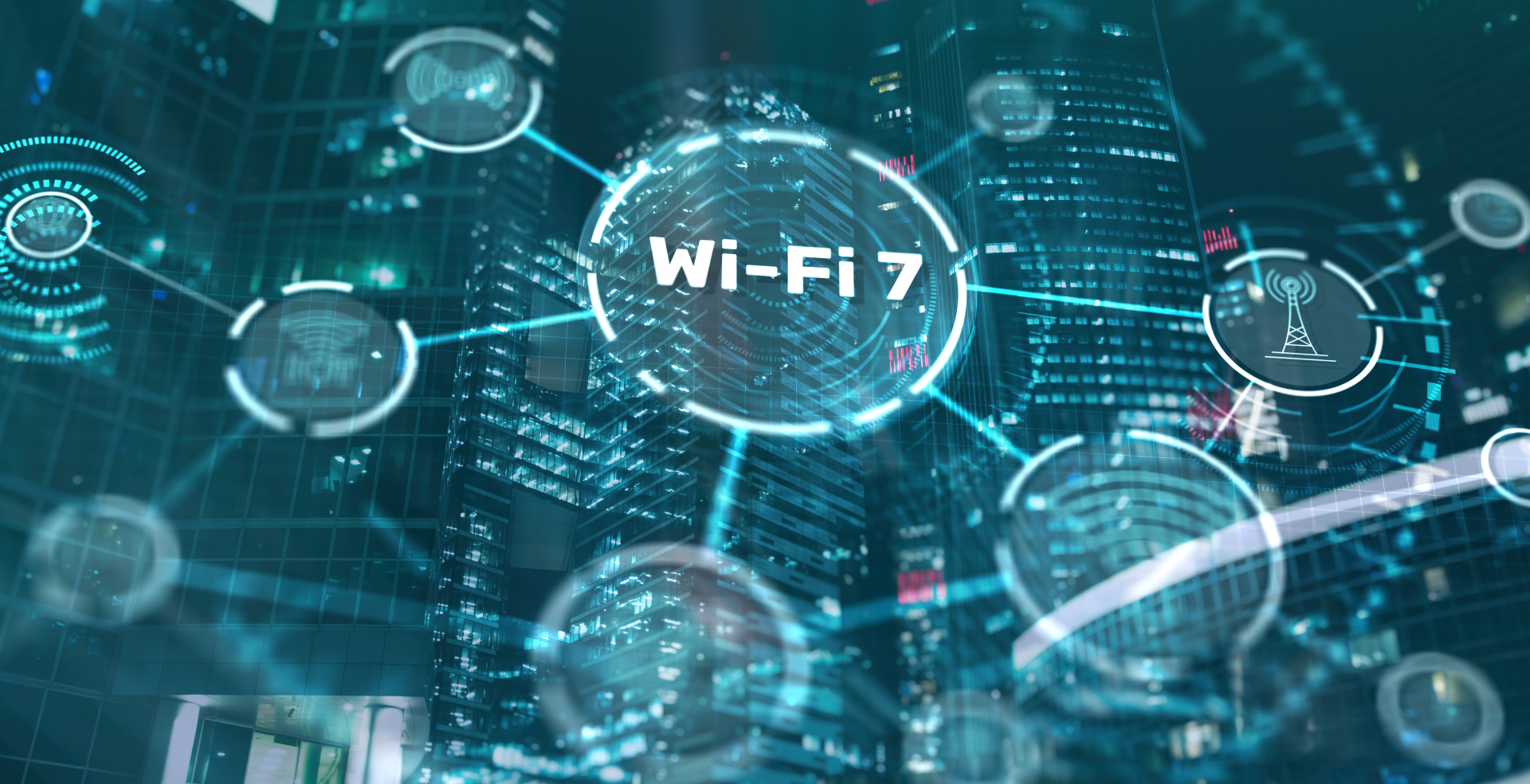April 3, 2025
The rapidly expanding Internet of Things (IoT) has created requirements for different communication protocols adapted to the many diverse range of use cases. Among the many protocols available are Wi-Fi, Wi-Fi HaLow, and LoRaWAN. While these technologies all facilitate wireless communication, their applications, characteristics and capabilities are very different.
This TOP Tech Talk provides an overview of these technologies highlighting some of the key relevant differentiators. We also take a quick look at the products offered by TOP-electronics, comparing the different solutions available and what use-cases they are best suited for.
In nearly all cases, IoT system architectures comprise of a network of Access Points (AP) or Gateways forming the infrastructure. On the client side there are the End Points (EP) which collect data from their environment.
Although we focus on Wi-Fi, Wi-Fi Halo and LoRaWAN in this TOP Tech Talk; sometimes at a system level there can be connectivity challenges due to the fact that the APs need to be installed on-site and require network connectivity usually in the form of an Ethernet cable plus some form of local power supply. For projects where this becomes an issue, established networks with readily available infrastructure such as LTE-M, NB-IoT, or NTN (Non-Terrestrial Network), can provide a convenient solution. We will return to this subject in a forthcoming TOP Tech Talk.
Needing no introduction, traditional Wi-Fi is deployed extensively in consumer and industrial applications and is well-known for its high speed, compatibility and huge popularity. Operating in the 2.4Ghz, 5Ghz and recently extended to include 6GHz bands, transmission ranges are typically limited to 20-50 meters indoors.
The latest iterations include Wi-Fi 6 and Wi-Fi 6E which offer faster transmission speeds, better coverage and lower power consumption than previous generations, while Wi-Fi 7, also known as IEEE 802.11be, is the newest standard, designed to deliver even faster speeds, lower latency, and enhanced capacity compared to its predecessors. Operating across the 2.4 GHz, 5 GHz, and 6 GHz frequency bands concurrently, Wi-Fi 7 introduces several key enhancements including:
These advancements make Wi-Fi 7 particularly suitable for applications requiring high data rates and low latency, such as 8K video streaming, virtual reality, online gaming, and dense network environments.

Figure 1, Wi-Fi 7, next generation networking communication
Data speeds are related to the link distances and the ambient noise floor, extending up to 9.6-23 Gbps for Wi-Fi 6E and 7 respectively. It is worth mentioning though that these extremely high speeds are however typically achieved at shorter ranges, due to the lower reception sensitivities achieved at larger QAM’s. QAM, or Quadrature Amplitude Modulation, is a modulation technique that combines two carriers, each with a different amplitude and phase, to transmit data effectively (click the link to learn more about QAM).
One of the key restrictions however for the use of traditional Wi-Fi in certain IoT use-cases is the shorter transmission ranges combined with its somewhat power-hungry nature. IoT typically needs longer transmission ranges and has a prerequisite for extended battery life. Conversely, very high performance is rarely required in IoT applications.
Emerging and growing rapidly since its publication in 2017, Wi-Fi HaLow has been specifically tailored to IoT use-cases and expands the Wi-Fi portfolio by offering significantly longer-range with much better lower-power capabilities. Operating in the sub-1 GHz band with frequencies from 700 MHz to 900 MHz, this permits much enhanced signal penetration and overall energy efficiency, albeit at speeds lower than traditional Wi-Fi.
HaLow generally offers ranges of up to 1Km with the potential for 3 km in line-of-sight. Under certain circumstances this can be dramatically extended - as Teledatics dramatically proved in 2024 with their demonstration of a HaLow system working at a distance of 106km!!
From a performance perspective, data speeds are in the range of 150 Kbps to 15 Mbps, at the top-end supporting higher throughput applications like HD video streaming. HaLow has been optimized for power consumption, enabling battery-powered devices to operate for up-to years, also offering very good scalability with up to 8,192 devices supported per access point.

Figure 2, Wi-Fi HaLow, offers extended range together with reduced power requirements
The target applications include IoT, industrial automation, agriculture, smart cities, video streaming, and digital signage.
One of the key advantages that HaLow brings is that it usefully bridges the gap between short-range Wi-Fi and the longer-range LPWAN technologies such as LoRaWAN, offering scalability and performance for both data-intensive and low-power applications.
Included in the HaLow standard is the latest Wi-Fi security WPA-3, ensuring that systems are well protected. It also offers the ability to remotely update devices, ensuring long-term protection and adaptability.
Managed by the LoRa Alliance and operating in the unlicensed ISM bands, LoRaWAN (Long Range Wide Area Network) is a Low Power Wide Area Network (LPWAN) protocol designed for long-range, ultra-low power communication. It is mostly targeted to sensor-only networks and applications and devices that transmit small amounts of data sporadically.
Typically operating in the sub-GHz bands like 868 MHz (Europe) or 915 MHz (North America) it offers significantly extended ranges of up to 5–10 km in rural areas and around 2-5 kilometers in many urban environments. There are also LoRaWAN solutions running at 2.4GHz bands, but we will focus on the sub-GHz in this TOP Tech Talk.
Offering data speeds of 250 bps to 22 Kbps, power consumption is extremely low for small data packets. Typical use-cases are limited to lower data rate applications because the slower transmission times impact the overall efficiency for larger amounts of data.

Figure 3, LoRaWAN offers very high power efficiency, and long rage, but is adapted for sensors and applications requiring small data packet
From a scalability standpoint LoRaWAN theoretically supports up to 10,000 devices per gateway, although performance does tend to degrade somewhat with higher density deployments due to the packet collisions that occur when the air starts to become saturated.
Typical applications include environmental monitoring, agriculture, smart metering, and basic sensor networks.
From a security standpoint, LoRaWAN is currently based on static and session keys, which are secure, but do lack the advanced security capabilities of Wi-Fi HaLow, meaning that some modules offer an additional level of encryption (see the product bullets below for more details).
LoRaWAN’s lower data rates also restrict its ability to handle complex applications like real-time updates, video, or large-scale automation.
|
Feature |
Wi-Fi (Traditional) |
Wi-Fi HaLow |
LoRaWAN |
|---|---|---|---|
|
Frequency |
2.4, 5, 6 GHz |
Sub-1 GHz |
Sub-1 GHz |
|
Range |
20–50 m indoors |
Up to 1–3 km |
5–10 km |
|
Data Speeds |
>1 Gbps |
150 Kbps to 15 Mbps |
250 bps to 22 Kbps |
|
Power Efficiency |
Low |
High |
Very High |
|
Device Density |
Thousands |
8,192 per AP |
10,000 per gateway (theoretical) |
|
Applications |
Consumer & enterprise |
IoT & industrial |
Low-data IoT |
Traditional Wi-Fi is optimized for high-speed, low latency, bandwidth-intensive applications where power efficiency and range are less critical.
Wi-Fi HaLow is ideal for IoT and industrial use cases requiring long-range, bi-directional communication with moderate to high data demands and lower power.
LoRaWAN is perfect for ultra-long-range, low-data-rate applications like basic sensors or environmental monitoring. It offers extremely low power for smaller data packets.

Figure 4, Selecting the correct solutions
Module solutions
Integrated modules offer ‘plug and play’ solutions, incorporating the radio, baseband, and supporting components. This eliminates the need for RF design expertise and dramatically simplifies product development as well as certification. This option is therefore ideal for developers with limited RF design experience, providing simplified IoT device development and targeting applications where rapid time to market, small size, and low power consumption are crucial.
Typical applications include:
Module solutions are best for: smart sensors, compact IoT devices, and applications requiring minimal design overhead.
Chip Level products
Ideal for custom hardware designs, chip level products provide more flexibility and customization for developers building IoT devices from the ground up. Catering for developers who need deeper control over their designs and seek cost-optimized solutions for high-volume manufacturing, chip level solutions offer greater flexibility but require greater effort/expertise in RF PCB design integration as well as certification.
Typical applications include:
Chip solutions are best for: Advanced IoT applications requiring customizable chip-level solutions, large-scale industrial deployments, or proprietary designs.
Here is a quick snap shot of TOP’s latest Wi-Fi solutions, that includes Modules, SoC’s.
Wi-Fi HaLow solutions
Here a quick snap-shot of our Wi-Fi HaLow products that includes Module, SoC’s.
LoRaWAN Solutions
And last but not least, here is an overview of our latest LoRaWan products that includes Modules, Infrastructure products.
Antenna solutions
And last but not least, here is an overview of our antennas.
Traditional Wi-Fi offers ultimate throughput. It continues to evolve bringing greater functionality, better performance, lower latency and leveraging the allocated bandwidth in interesting and innovative new ways. It is perfect for high performance applications.
Wi-Fi HaLow is an emerging and transformative standard that complements existing Wi-Fi standards and goes further to address the emerging needs of industrial electronics and IoT applications. Its combination of range, lower power consumption, high device capacity and robust security offers a sweet spot make to make it another essential tool for the modern IoT landscape.
At the same time, LoRaWAN remains a very important standard for low-data, longer-range sensor networks with extremely low power requirements.
All technologies have important and distinct roles in the IoT ecosystem and complement each other in bridging multiple different connectivity gaps.
At TOP-electronics, we understand that choosing the right Wi-Fi, Wi-Fi HaLow or LoRa solution is critical for the success of your next design.
With our in-depth technical expertise and a strong product portfolio, we are here to help guide you through the decision-making process. Whether you need a plug-and-play module for quick integration or a flexible SoC for a tailored solution, we can help you leverage multiple industry-leading partners technologies to help optimize your next design.
We are here to support you and your individual design process.
Reach out to us today.

Sources
Wi-Fi Alliance - https://www.wi-fi.org/
Newracom
Quectel
MaxLinear
Northern Mechatronics
Digi - https://www.digi.com/resources/definitions/qam
Back